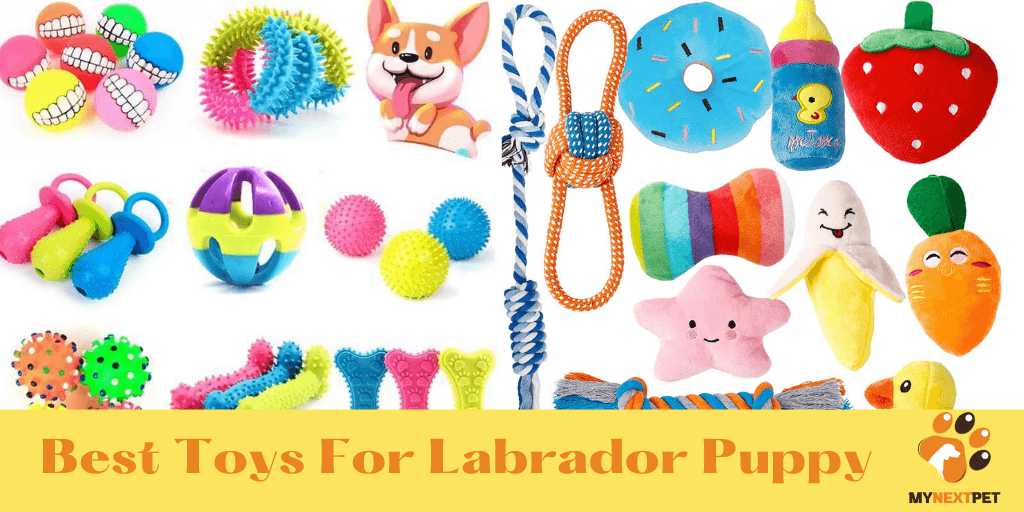Train Labrador stop biting involves teaching the appropriate dog behaviour and providing positive reinforcement for desired actions. It is important to start training at a young age and to be consistent with the training methods. Training should focus on teaching the dog commands such as “drop it” or “leave it” to discourage biting and providing the dog with appropriate chew toys to redirect biting behaviour. It is also important to address any underlying issues causing the biting, such as fear or anxiety. Consistency, positive reinforcement, patience and professional training are the key to success.
So, here in the article, we are going to discuss how to train Labrador puppies not to bite if you are facing Labrador biting problem and cover the toys that can help during the training.
Effective Techniques to Train Labrador Stop Biting
There are many tricks to train stop biting to your Labrador, and a few of them are discussed below for you.
1. Start training at a Young Age
The earlier you start training your Labrador not to bite, the better. Puppies are more receptive to learning and are less likely to have developed bad habits.
2. Use Positive Reinforcement
Positive reinforcement is an effective way to teach your Labrador what behaviour is acceptable. Reward your dog with treats, praise, or playtime when they display the desired behaviour.
3. Teach Commands
Teach your Labrador commands such as “drop it” or “leave it” to discourage biting. Consistently use these commands when your dog tries to bite and reward them when they obey.
4. Provide Chew Toys
Providing your dog with appropriate chew toys can redirect their biting behaviour. When your Labrador starts to chew on something, they shouldn’t; redirect them to their chew toy instead. This helps a lot to train labrador stop biting.
5. Address Underlying Issues
If your Labrador is biting due to fear or anxiety, it is important to address these underlying issues. A professional dog trainer or behaviourist can help you identify and address these issues.
6. Be Consistent
Consistency is key when train Labrador stop biting. Using the same commands and rewards every time will help your dog understand what is expected of them.
7. Patience
Training a dog not to bite takes time and patience. Don’t get discouraged if your dog doesn’t learn overnight. Keep working with them and be consistent in your training methods.
8. Professional Training
If you struggle to train your Labrador not to bite, consider seeking professional help. A professional dog trainer can help you identify and address any issues your dog may have and provide you with effective training techniques.
Also Read : Labrador Puppy Dog Price
Training a Labrador not to bite requires patience, consistency and positive reinforcement. It’s important to address underlying issues, such as fear or anxiety causing the biting, and to be consistent with training methods. Remember that professional help is always available if you need it.
Best Toys To Train Your Lab Puppy To Stop Biting

Puppy toys designed to stop biting are typically made of durable, non-toxic materials that can withstand the rigours of a puppy’s chewing and biting. These toys are also designed to redirect a puppy’s biting behaviour away from inappropriate objects, such as furniture or clothing. Here are some of the best chew toys for puppies:
- KONG Puppy Toy: This toy is made of durable rubber and filled with treats to keep your puppy entertained and engaged.
- Nylabone Puppy Chew Toys: These toys come in various flavours and textures and are designed to help puppies with teething.
- Goughnuts MAXX 50: This chew toy is made of durable rubber and is designed for heavy chewers.
- Benebone Wishbone: This toy is made of durable nylon and has a unique shape that makes it easy for puppies to hold and chew.
- Outward Hound Hide-A-Squirrel: This interactive toy keeps puppies entertained by challenging them to find the squeaky squirrels hidden inside.
- Zogoflex Tug: This tug toy is made of durable, non-toxic material and is great for playing tug-of-war with your puppy.
- Rope Toys: Rope toys are great for teething puppies and tug-of-war.
It’s important to note that puppies should be supervised while playing with chew toys, and toys should be inspected regularly for any signs of wear and tear and replaced if necessary.
FAQ’s about Toys for Labrador Puppy
What toys should I give my puppy?
When choosing toys for your puppy, it’s important to consider their size, breed, and play style. Puppies have a natural urge to chew and explore, so it’s important to provide them with toys that can satisfy these needs.
What toy do dogs like the most?
Dogs have different preferences for toys, and what they like the most will depend on the individual dog’s personality, breed, and size.
What age can puppies start playing with toys?
Puppies can start playing with toys as soon as they come home, usually around 8 weeks of age. At this age, they are starting to develop their teeth and jaws, and toys can help them through the teething process.
FAQ’s about Labrador Puppy Stop Bite Training
Do Labradors bite their owners?
Labradors are known for being friendly and affectionate dogs, but like any other breed, they may bite if they feel threatened or uncomfortable.
When do Lab puppies stop biting?
Puppies, including Labrador Retriever puppies, will typically go through a stage of biting and mouthing as they explore their environment and learn about their mouths and teeth.
At what age do Labradors stop biting?
The biting is normal and a part of puppy development. They will usually start teething around 3-4 months of age, and this stage can last up to 6-8 months.
Why do Labradors bite so much?
It could be due to a lack of proper training, socialization or exercise. Biting can also be a sign of underlying behavioral issues such as anxiety, fear, or aggression. These behaviors can be caused by a lack of boundaries and rules, inconsistent training, or lack of physical and mental stimulation.
What is the best age to train a dog?
The best age to start training a dog is during their critical socialization period, which is between 3 to 14 weeks of age. However, training can and should continue throughout the dog’s life.
What is the first step to train a dog?
The first step in training a dog is to establish yourself as the leader or pack leader. Dogs are pack animals, and they instinctively look to the leader for guidance and direction. By establishing yourself as the leader, you are setting clear boundaries and expectations for your dog’s behavior.
The second step is to establish a consistent routine and to set up a schedule for feeding, exercise, and training. This will help your dog understand what to expect and when to expect it, which will make training easier.
The third step is to start with basic obedience training. Basic commands such as “sit,” “stay,” “come,” and “heel” are essential for a well-behaved dog and will provide a foundation for more advanced training.
What are the commands to train a dog?
- “Sit” – This command is used to teach your dog to sit down on command.
- “Stay” – This command is used to teach your dog to remain in a seated or standing position until released.
- “Come” – This command is used to recall your dog to you.
- “Heel” – This command is used to teach your dog to walk beside you and keep pace.
- “Down” – This command is used to get the dog to lay down on the ground.
- “Off” – This command is used to stop jumping or climbing on people or furniture.
- “Leave it” – This command is used to stop the dog from picking up or eating something.
- “Drop it” – This command is used to make the dog release something it has in its mouth.
- “Good boy/girl” – This is a general praise command to acknowledge the dog’s good behavior.
- “No” – This command is used to indicate that what the dog is doing is not acceptable.
Conclusion
In conclusion, train Labrador stop biting is essential for the safety of yourself, your family, and others around you. It’s important to start training young and use positive reinforcement, commands, and chew toys to redirect biting behaviour. Addressing underlying issues, such as fear or anxiety, is also important. Consistency, patience, and professional training are the key to success. Remember, while Labradors are known to be friendly and loving, they are still animals and can bite if not trained properly. With the right approach and techniques, you can teach your Labrador to stop biting and ensure a safe and happy life for you and your furry companion.

